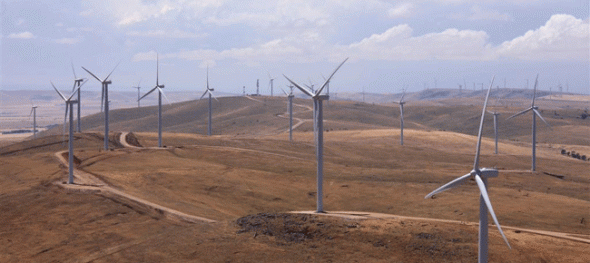South Australia next March will become the first Australian mainland state to go without locally-produced coal-fired generation, but the Australian Energy Market Operator says it will not impact on the reliability of the grid.
AEMO, which takes responsibility for the running the grid in Australia, issued an update on Monday following the announcement by Alinta Energy that it will close its remaining generator, the 546MW Northern Power station in Port Augusta, by next March.
The early withdrawal, it says, “is not expected to change the projected extent or timing of the Reliability Standard breaches” that it had previously forecast.
But it will make the state more reliant on wind energy – and presumably solar, which on occasions is providing more than 20 per cent of day-time demand – and on the inter-connections with South Australia.
AEMO says this will create more opportunities for those providing support services such as frequency regulation. This could be met by gas generators, or wind farms, or even battery storage.
AEMO does serve a warning, however, that if high demand coincides with a time when there is little wind, and gas plants are not available, and there is a low level of imports through the inter-connector, either through outage or high demand in Victoria, then the South Australia grid may experience supply shortfalls.
(Before the report was publicly available it was given first to some mainstream newspapers, including The Australian, which took the opportunity to say: SA risks power shortfall because of wind farm dependence.)
Actually, the local grid risks power shortfalls because it depends equally on wind farms, its gas plants and the inter-connector, and the conditions in Victoria. On the rare occasion that all three should fail, then it says some consumers might not get all their power needs for brief periods.
It says that even with the Alinta coal assets, the risk of this happening in 2017/18 grows to just 2/10,000 – meaning a chance of just under two hours of outages in any one year.
With the absence of coal, there is an ever so slight increase next financial year, and when Torrens A gas plant closes the following year this increases to about 6 hours in any one year. The reliability standard is to meet demand for all but 20 hours of the year.
This graph above shows how comfortably the South Australia system meets Australia’s high reliability standards, even without local coal power.
Mark Stedwell, the head of NEM system capability, told RenewEconomy that South Australia has the highest penetration of variable renewable energy (wind and solar) anywhere in the world. It is currently more than 40 per cent.
But while it can often deliver more than 100 per cent of its energy needs from renewables, the state is still reliant on the main grid, through the main inter-connector, for ancillary services such as frequency.
Stedwell says this is creating new opportunities for frequency services in South Australia. It has been provided by coal and gas plants up to now, but there is no reason why wind farms could not provide the same function, it’s just that none have decided to do so until now. Battery storage is another option.
“Any technology that can give a fast injection of power, or reduction in power, is able to provide the sort of services that might be needed,” he said.
Stedwell says South Australia is uniquely challenged because it relies on that one inter-connector, unlike Germany which has multiple, more significant links with neighbouring markets. Still, in Germany, there is a big push for battery storage to provide frequency control and other services.









